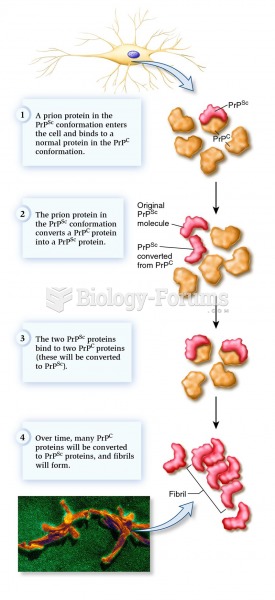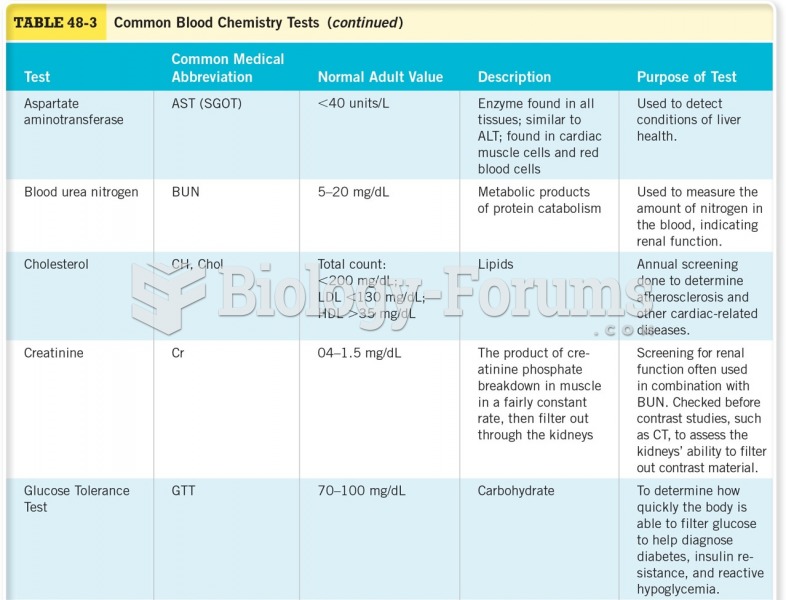Answer to Question 1 Pseudomonas aeruginosaThis is a bacteria usually found in unclean drinking water and unclean cage
conditions. A loss of appetite, loss of weight, diarrhea, or constipation, inflammation of the eyes and ears,
pneumonia, inflammation of the intestines, inflammation of the uterus in females, abortion, and infertility
are signs of infection. Consult with your veterinarian. Proper cleaning and sanitation are important in
preventing infection.
ConjunctivitisThis is caused by a foreign body getting into the eyes or by a bacteria infection. Symptoms
include swelling and redness around the eyes, sensitivity to light, watering, and pus formation. Eyes
should be washed gently and frequently with an eyewash solution. Severe cases may need a trip to the
veterinarian. Cages and feed containers should be washed and disinfected. Infected animals should be
isolated.
OtitisThis may occur after a respiratory infection or trauma and is characterized by twisting and
lowering of the head, hanging the head to one side, and running around in a circle. The ear should be
cleaned, and ear drop medications applied. Keep the animal warm and free of drafts.
PneumoniaThis ailment is usually associated with cold, damp conditions that lower the body's
resistance. It is indicated by listlessness, failure to eat, and difficulty breathing. Other signs may include
sneezing, fever, weight loss, a lack of energy, and a thick yellowish discharge from the nose. Consult with a
veterinarian for proper diagnosis and treatment.
Digestive disordersLoose and watery stools are caused by nutritional, bacterial, protozoal, parasitic, or
stress-induced illnesses. A veterinarian should be consulted to diagnose the condition and begin proper
treatment.
Reproductive disordersIn females these may include infertility, absorption or resorption of fetuses,
retained or mummified fetuses, difficulty giving birth, metritis, pyometra, lack of milk, and mastitis.
Infections in the uterus can spread to other parts of the body; they can be caused by retained placentas and
can be spread by males in a polygamous breeding system. If any of these signs are observed, the animal
should be taken to a veterinarian for evaluation, diagnosis, and treatment.
Pathogenic organismsThese organisms are capable of causing disease; their toxins can be absorbed into
and distributed throughout the body by the circulatory system. Animals appear listless, go off their feed,
and lose weight. Pathogenic organisms may be associated with unsanitary conditions and contaminated
feed.
ParasitesCysts and trophozoites of Giardia species can be seen in the feces. Intermittent watery diarrhea
or impaction. Dermatophytosis or ringworm can cause animals to lose their hair, and there can be
reddening around the nose, eyes, and base of the tail. Isolate the infected animal, and consult with your
veterinarian for proper treatment.
ImpactionUsually caused by moldy or spoiled feed, poor nutrition, stress, insufficient water intake,
pressure on the intestines from pregnancy, and infectious agents, the symptoms of impaction include the
reduction or absence of feces, lack of appetite, rough hair coat, and an animal humped up with its chin
between the front feet and resting on the cage floor. The animal may show no desire to move about and
may appear glassy-eyed. If the animal is still eating, a dropper of mineral oil can be administered daily, or
the dietary fiber can be increased. Otherwise, a veterinarian needs to be consulted.
Fur chewingPoor nutrition, small cages, drafty conditions, boredom, and high humidity have been
suggested as causes. Correct the conditions that are causing the fur chewing. You may need to consult your
veterinarian if the condition doesn't improve.
MalocclusionThis is a dental deformity in which the molars and incisor teeth are overgrown or do not
meet properly. It may be caused by abnormal growth, inappropriate diet, or genetics. Affected animals fail
to eat, lose weight, and may salivate or slobber; death may result from starvation. A veterinarian may be
able to trim or file the teeth.
Thiamine (vitamin B1) deficiencyThis constitutes a lack of vitamin B1 in the diet and is indicated by
neurological signs such as trembling, circling, convulsions, or paralysis. Feed sources high in vitamin B1.
Your veterinarian can inject thiamine or B-complex vitamins.
Calcium to phosphorous imbalance or phosphorous deficiencyThese deficiencies result in severe muscle
spasms; muscles of the hind limbs, forelimbs, and face are affected. Consult with your veterinarian. He or
she may treat with calcium gluconate. Prevent by feeding a well-balanced, nutritionally complete diet.
MastitisThese bacteria infections are caused by biting of the nipples by the young, weaning the young
too early, unsanitary conditions, or incomplete nursing. Consult with your veterinarian to determine the
cause and begin treatment. Cages should be cleaned and disinfected. You may need to supplement milk to
the young.
Answer to Question 2Polygamous breeding cages are available for owners who want to breed more than one pair of animals. This
type will usually have three separate cages connected together with holes in the back of the cages that lead to
a tunnel that connects all three cages. Females are fitted with a plastic collar that prevents them from leaving
their cages and entering the tunnel. Two females and one male are placed in the cages, and the male can use
the tunnel to go from one cage to the other. If one of the females allows him to stay in her cage, a third female
can be added to the cage where the male was first put. Additional cages can be added to house up to
20 females. Allowing the male to run the tunnel keeps him in good condition.
In polygamous matings, the male is left in the tunnel and can visit the cages of the females at any time. The
openings to the tunnel can be closed off to prevent a female from being rebred right after giving birth.







